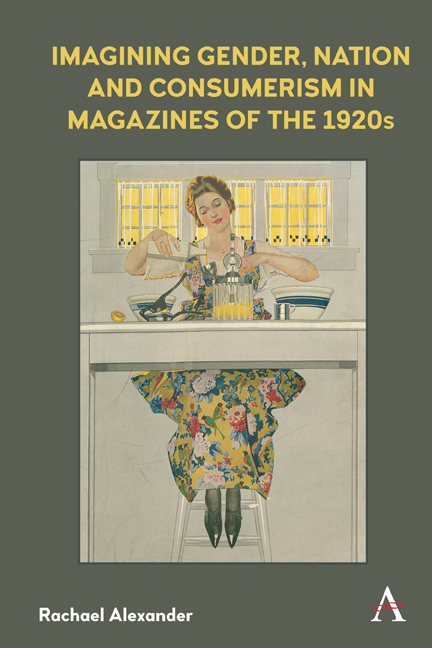Book contents
- Frontmatter
- Dedication
- Contents
- List of Illustrations
- Acknowledgements
- Introduction
- 1 Two Home Journals: A Comparative Approach
- 2 The Art of Femininity: Aspiration and Self-Improvement
- 3 The Home and Domesticity: Readers, Consumers, Citizens
- 4 Fashionable, Beautiful, Moral: Idealised Images of Femininity
- Conclusion
- Appendix: Content Analysis of Advertising from the Ladies’ Home Journal and Canadian Home Journal
- Notes
- References
- Index
3 - The Home and Domesticity: Readers, Consumers, Citizens
Published online by Cambridge University Press: 14 December 2021
- Frontmatter
- Dedication
- Contents
- List of Illustrations
- Acknowledgements
- Introduction
- 1 Two Home Journals: A Comparative Approach
- 2 The Art of Femininity: Aspiration and Self-Improvement
- 3 The Home and Domesticity: Readers, Consumers, Citizens
- 4 Fashionable, Beautiful, Moral: Idealised Images of Femininity
- Conclusion
- Appendix: Content Analysis of Advertising from the Ladies’ Home Journal and Canadian Home Journal
- Notes
- References
- Index
Summary
Since for many years home and hearth were identified with women, it was natural that the first [Canadian] women's magazine should be called the Canadian Home Journal.
– Fraser Sutherland, The Monthly Epic, 1989The home was considered the ‘natural’ consumer unit, the housewife the ‘natural’ consumer. Of course, there was little that was actually natural about this process.
– Jennifer Scanlon, Inarticulate Longings, 1999The conceptual centrality of the home in the Ladies’ Home Journal and Canadian Home Journal is evidenced, as Fraser Sutherland points out in the case of the latter, by the presence of the word itself in their titles. Both magazines placed a great deal of importance on the home and the role of their imagined readers in that context; yet, while Sutherland seems to accept the ‘naturalness’ of the association between women and the home, Scanlon questions it. In her comment she draws attention to the role of consumerism, and hence of commercial interests, in enforcing the identification of women with the home. More broadly, it is important to recognise domesticity itself, as it is presented in these magazines, as an ideological construct which emerged in the nineteenth century in tandem with the rise of the middle classes. The consumer emphasis dominated from the turn of the century onwards, as evidenced by Christine Frederick's often-quoted Selling Mrs. Consumer (1929). Including chapters such as ‘The Facts Regarding Mrs. Consumer's Spending Power’, ‘The High Status of American Women in Family Spending’ and ‘Mrs. Consumer Is Looking for Effects’, Frederick's book champions advertising while asserting the importance of women's proper role as housewives and, in that capacity, consumers. Frederick was highly influential, yet her role was inherently conflicted; as Janice Williams Rutherford comments, ‘Disingenuously representing herself as a typical housewife, she appeared to remain in the domestic sphere while working in the public one’ (69). This tension arises from the superimposing of early twentieth-century notions of consumption on nineteenth-century conceptions of domesticity and enduring conceptions of ‘separate spheres’, which must first be understood and which this chapter takes as its starting point.
- Type
- Chapter
- Information
- Publisher: Anthem PressPrint publication year: 2021

